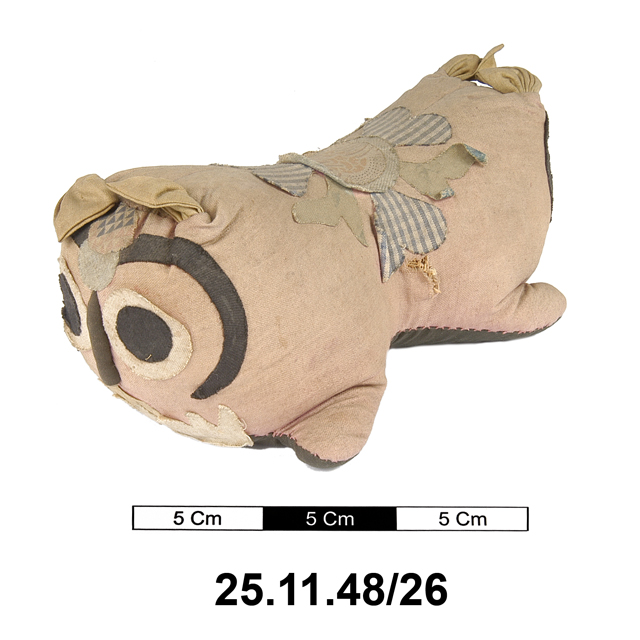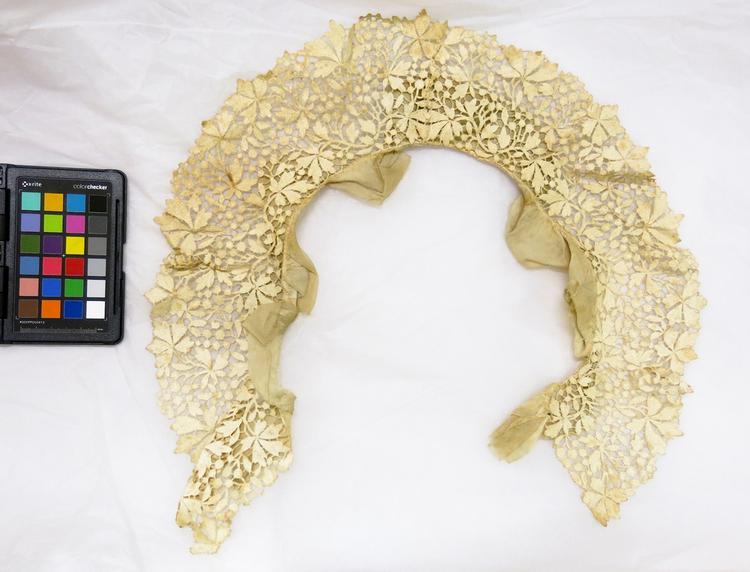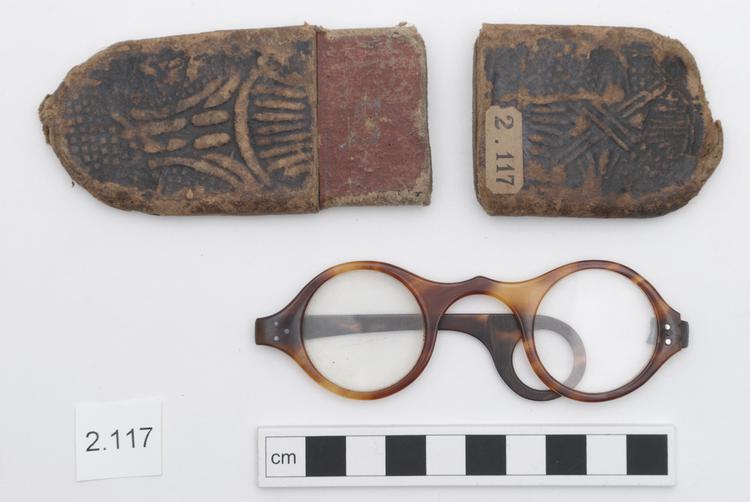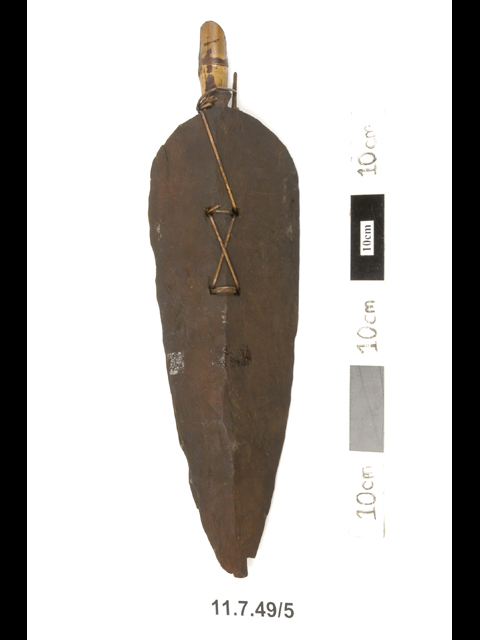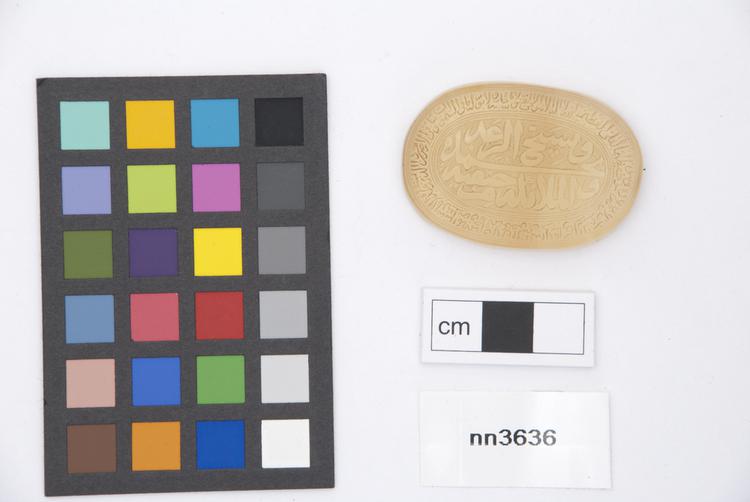
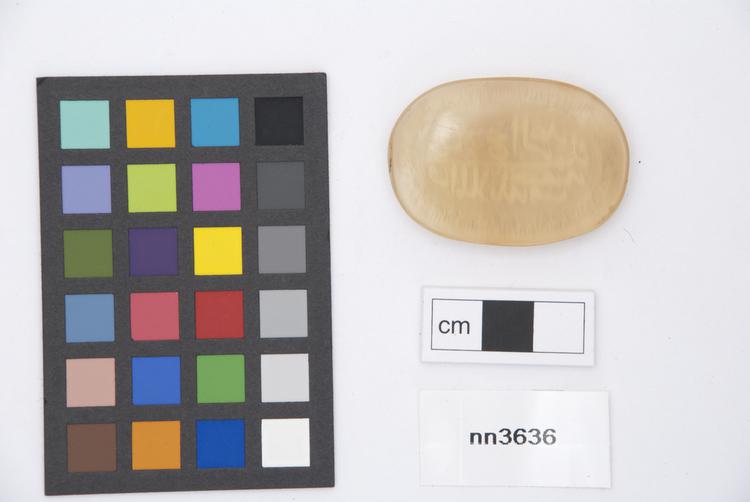
Lucky charm, an oval of translucent yellowish cream stone, perhaps sard or carnelian, oval and inscribed on one side with the ‘Ayat Al Kursi’ (آیت آلکرسی ) from the Quran (Surah 2:255). When engraved on jewellery the Ayat Al Kursi provides protection for the wearer.
This amulet consists of a block of pale stone (perhaps sard or carnelian?) engraved with the ‘Ayat Al Kursi’ (آیت آلکرسی ) from the Quran (Surah 2:255). When engraved on jewellery the Ayat Al Kursi provides protection for the jewellery's wearer. Some Muslims say the Ayat Al Kursi when they leave home so that they may be protected for the day ahead. In many Muslim homes a copy of the Ayat Al Kursi is hung on the wall to provide protection for the household. Muslim children are taught the Ayat Al Kursi from a young age. Sir Al Hajj Muhammad Zafarullah Khan's (1971) interpretation of the Ayat Al Kursi in English reads as follows: “Allah is He save Whom none is worthy of worship, the Ever-Living, the Self- Subsisting and All-Sustaining. Slumber seizes Him not, nor sleep. To Him belongs whatsoever is in the heavens and what- soever is in the earth. Who is he that dare intercede with Him, except by His per- mission? He knows all that is before them and all that is behind them, and they cannot compass aught of His knowledge, except that which He pleases. His knowl- edge extends over the heavens and the earth, and the care of them wearies him not. He is the Most High, the Most Great."



